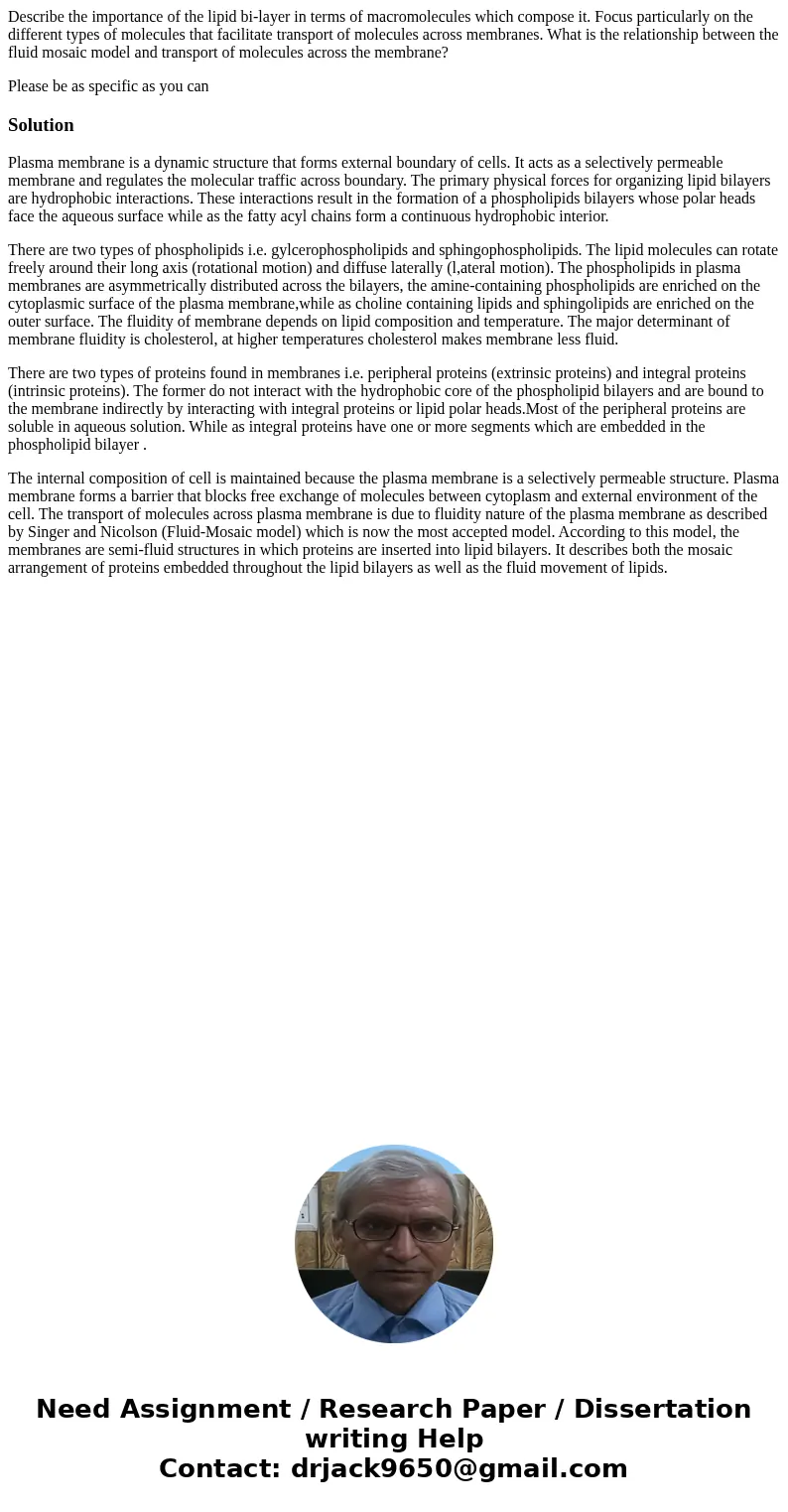Describe the importance of the lipid bilayer in terms of mac
Describe the importance of the lipid bi-layer in terms of macromolecules which compose it. Focus particularly on the different types of molecules that facilitate transport of molecules across membranes. What is the relationship between the fluid mosaic model and transport of molecules across the membrane?
Please be as specific as you can
Solution
Plasma membrane is a dynamic structure that forms external boundary of cells. It acts as a selectively permeable membrane and regulates the molecular traffic across boundary. The primary physical forces for organizing lipid bilayers are hydrophobic interactions. These interactions result in the formation of a phospholipids bilayers whose polar heads face the aqueous surface while as the fatty acyl chains form a continuous hydrophobic interior.
There are two types of phospholipids i.e. gylcerophospholipids and sphingophospholipids. The lipid molecules can rotate freely around their long axis (rotational motion) and diffuse laterally (l,ateral motion). The phospholipids in plasma membranes are asymmetrically distributed across the bilayers, the amine-containing phospholipids are enriched on the cytoplasmic surface of the plasma membrane,while as choline containing lipids and sphingolipids are enriched on the outer surface. The fluidity of membrane depends on lipid composition and temperature. The major determinant of membrane fluidity is cholesterol, at higher temperatures cholesterol makes membrane less fluid.
There are two types of proteins found in membranes i.e. peripheral proteins (extrinsic proteins) and integral proteins (intrinsic proteins). The former do not interact with the hydrophobic core of the phospholipid bilayers and are bound to the membrane indirectly by interacting with integral proteins or lipid polar heads.Most of the peripheral proteins are soluble in aqueous solution. While as integral proteins have one or more segments which are embedded in the phospholipid bilayer .
The internal composition of cell is maintained because the plasma membrane is a selectively permeable structure. Plasma membrane forms a barrier that blocks free exchange of molecules between cytoplasm and external environment of the cell. The transport of molecules across plasma membrane is due to fluidity nature of the plasma membrane as described by Singer and Nicolson (Fluid-Mosaic model) which is now the most accepted model. According to this model, the membranes are semi-fluid structures in which proteins are inserted into lipid bilayers. It describes both the mosaic arrangement of proteins embedded throughout the lipid bilayers as well as the fluid movement of lipids.

 Homework Sourse
Homework Sourse